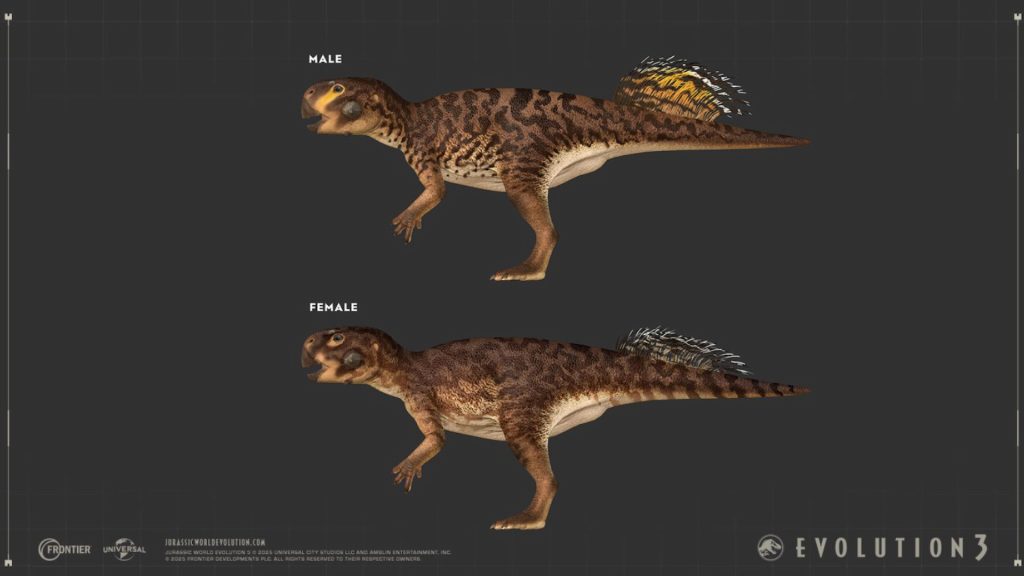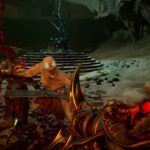Ever want to manage your own jurassic park in glorious management sim format? Well, you’ve probably played Jurassic World Evolution or its sequel, then. The original game released back in 2018, and with the latest one just around the corner, it’s safe to say the series has been steadily rolling out content from the beginning. But Jurassic World Evolution 3 isn’t just some glorified DLC; no, it’s adding some game-changing features and core gameplay mechanics that clearly define it as a substantial entry. Let’s go over some of the breakthrough features and exciting new elements that make up this evolved sequel. Here are 15 things to know before you buy Jurassic World Evolution 3.
Over 80 Dinosaur Species
While the list of prehistoric animals eclipses that of Jurassic World Evolution 2, it still omits some species from that game’s extensive DLC. But roster count isn’t everything. Jurassic World Evolution 3 is injecting new life into its dinos with a range of additional features. For the first time, dinosaurs will display sexual dimorphism between male and females. These are visually distinct alterations, such as male pterosaurs having larger and more colorful tail crests than their female counterparts. But that’s not the only depth being added to the game’s 80-plus dinosaur roster.
Juvenile Dinosaur Variants

For the first time, infant variants of each prehistoric species are present in the game. And they’re more than just a pint-sized version of their mom and dad, they behave and animate differently. The studio perused real-world fossil data to determine how juveniles from each species might look and behave. Some have larger eyes and less hair than the adult variant, and vice versa. An example the studio shared were Psittacosaurus infants, which use all four legs to move around instead of the adults which walk on two.
Improved Dinosaur AI
The addition of juveniles adds depth not just to dino variety and animations, but how they actually behave. Infants often stick close to their parents and avoid confrontation. Parents preoccupy themselves with child-rearing, protecting them from potential predators. And yes, it’s confirmed that juveniles can get eaten and killed by other adult species, and even attack guests. The combination of unique designs, different animations and sounds, and distinct AI behavior for juvenile variants adds a whole lot more dynamism to each species.
Generations of Dinosaurs

The existence of juveniles adds a whole new wrinkle to the management side of things as well. You can now select where to place nests for adult dinos to nurture and raise their young. Building a safe and sheltered environment for juveniles to grow up in requires a new set of resources and materials, as well as an understanding of that species’ particular social dynamic. Some dinos are shy to breed around humans while others thrive in front of an audience, so players will have to adapt to the family dynamics of each species.
Crossbreeding
Satisfied with how a particular dinosaur turned out and what to replicate it? Well, you can now clone your favorite dinosaur as long as it’s fertile. There’s also crossbreeding for players who want to min/max stats, or just want to mix the traits and visual appearance of two species.
Terraforming

One of the best ways to ensure a safe and ideal nest environment for infant dinos is to edit the natural terrain already present. Digging out a small valley might be perfect for shy adults wanting to procreate in peace, while growing tall trees and carving out high cliffside outcroppings might be ideal for pterodactyl nests. Pre-built fences are still there for you when you’re not feeling creative, but the option for natural enclosure terraforming is always there should the specific need arise.
Modular Construction
For the first time, players can create their own buildings from scratch. Now, like Frontier’s other games (Planet Coaster, Planet Zoo), we have dozens of building materials to color, resize, and combine together to make custom structures. The inclusion of a grid-based placement system makes snapping pieces to terrain precise and simple. The game still includes a variety of pre-built structures, but the addition of modular customization is a huge boon for the series that fans hav begged for.
Park Attractions

A number of new attractions make their way to JWE3, including a Balloon Tour and something ominously termed Dinosaur Encounter. The new river-themed Cretaceous Cruise attraction really lets players’ creativity loose. In addition to all the modular construction possibilities, carving out the terrain for a guided boat tour is encouraged. First-person perspective is especially immersive here, but Cretaceous Cruise also gives players full control over the kayak just like if they were a guest experiencing it themselves.
Sandbox Mode
Players that want to experience all the fun and creativity without any failure points should check out the returning sandbox mode. This entry ramps up the customization with modular building tools and terrain formation, making sandbox that much more fun to experiment in. What’s more, players can even toggle dinosaur maturity on or off to keep juvenile dinos from growing up. There really is no boundary in sandbox, especially since every dinosaur species is available to use without the need to unlock them first.
Frontier Workshop
Players can even take their park creations and share them with others via the Frontier Workshop. Or browse the creations of others through the Workshop and insert them into your own parks. What’s more, Frontier Workshop has cross-play functionality, allowing players to share regardless of platform.
Campaign

Of course, the lack of sandbox unlocks doesn’t diminish the purpose of campaign mode. In fact, based on what we know, this entry’s campaign looks to be the main attraction of the game. In terms of story and timeline, the campaign directly follows the events of Jurassic World Evolution 2, positioning it closer to the events of the Jurassic World Dominion film. Players are tasked with introducing the wider world to the wild world of dinosaurs across 10 park levels spanning the globe. The managing director of this effort, Cabot Finch, returns to the narrative as well as other key characters.
Jeff Goldblum as Dr. Ian Malcom
Ian Malcom reprises his role as your insightful narrator through key parts of the game’s campaign. And for fans of the original films, Jeff Goldblum continues his contribution to the games by voicing the doctor. While Finch fulfills the manager role of the game, Malcom takes on a more skeptical advisory position.
3 Factions to Appease or Oppose
The campaign is infused with a touch of politicking and power struggles. Three factions, or sectors, vie for the player’s influence by granting objectives and offers. These three factions (conservation, entertainment, and security) have differing demands and expectations for your dinosaurs, and some might even want certain species gone for good. This bit of faction gameplay adds a touch of moral decision-making to campaign, spicing up the mode quite a bit.
New Japan and Hawaii Locations

The campaign goes beyond the United States locations the previous game exclusively took place in. Now, players will build new parks in Japan, Papua New Guinea, and as an extension of the US, Hawaii. These locations have their own unique goals, tasks, biomes, characters, and sector challenges.
Release Date, Price, and Platforms
Jurassic World Evolution 3 launches worldwide on October 21. It’ll be the first game in the series to omit prior console generations, being available on PC, PS5, and Xbox Series X/S exclusively. The game costs $59.99 for the standard edition, with the Deluxe Edition (which includes the Badlands Set and Upgrade Pack) being priced at $74.99.




This sounds like an exciting addition to the Jurassic World franchise! Managing a dinosaur park in a simulation game seems like a lot of fun. I can’t wait to see how the gameplay features evolve in this installment.